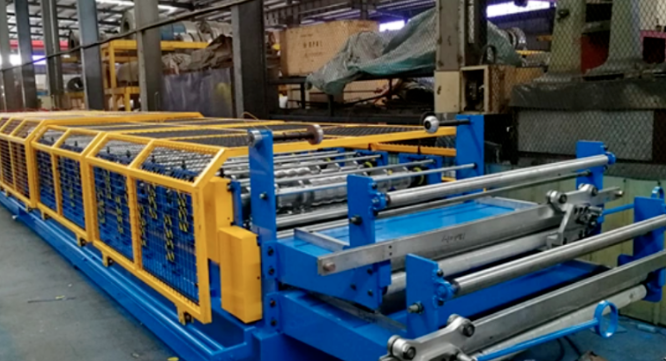
Posted on Thursday, October 3, 2024
Roll forming, a continuous bending operation where long strips of sheet metal are passed through a series of rollers to form desired shapes, has evolved significantly over the centuries. The journey of roll forming technology traces back to the early days of industrial metalworking and has since transformed into a highly sophisticated, automated process that powers industries around the globe.
Roll forming's roots can be traced back to the broader history of metalworking, which began in ancient civilizations. Metal shaping techniques such as forging and casting were used by early cultures to create tools and structures. However, it wasn't until the Industrial Revolution in the 18th and 19th centuries that the first technologies resembling modern roll forming began to take shape.
The mass production demands of the Industrial Revolution created a need for more efficient metalworking methods. Early rolling mills were developed to roll sheets of metal into uniform thicknesses. These mills were precursors to roll forming, though the process of continuously forming metal into complex profiles had yet to be refined.
The early 20th century saw the first dedicated roll forming machines emerge as engineers sought to mechanize and streamline metal shaping. The initial applications were primarily in the automotive and construction industries, where mass production of uniform metal components was critical.
During this period, roll forming machines were manually operated and less precise compared to today’s standards. However, they introduced a significant breakthrough: the ability to continuously shape metal without the need for cutting or welding. This made roll forming an attractive option for manufacturers looking to produce parts quickly and efficiently.
After World War II, the roll forming industry experienced rapid expansion. The booming post-war construction and automotive industries drove demand for efficient production methods, and roll forming became a go-to technology for producing metal roofing, panels, and automotive parts.
Advances in machine design, particularly the development of multiple sets of rollers working in sequence, allowed for more complex profiles to be created. The process became faster, and new materials such as aluminum and high-strength steel were incorporated into roll forming applications. Roll forming machines became more specialized and adaptable to different industries.
The advent of automation in the late 20th century and the rise of computer-controlled machinery revolutionized roll forming technology. Modern roll forming machines are equipped with programmable logic controllers (PLCs) and computerized numerical control (CNC) systems, allowing for precise, repeatable production of complex shapes with minimal human intervention.
Today, roll forming machines are capable of high-speed production, running continuously with minimal waste and downtime. They are integral to industries such as construction, automotive, and renewable energy, where precision and efficiency are paramount.
The evolution of roll forming is far from over. Innovations in materials, such as the use of recycled metals, along with advancements in automation and AI-driven manufacturing processes, are paving the way for the next generation of roll forming machines. As the global demand for metal components continues to grow, roll forming will remain at the forefront of modern manufacturing, driving efficiency, sustainability, and innovation.
From its early days as a manual process to the cutting-edge machines of today, roll forming has become a cornerstone of modern industry, shaping the future of metalworking.

32/1000 Box Profile Roll Forming Machine – Complete Guide & Specifications
Posted on Sunday, November 16, 2025
High-performance 32/1000 box profile roll forming machine for roofing and cladding. Full specifications, profiles, applications, pricing

PBR / R-Panel Roll Forming Machine – Complete Guide & Specifications
Posted on Sunday, November 16, 2025
PBR / R-Panel roll forming machine for roofing and wall cladding. Full specs, profiles, applications, pricing, and global buying guide. Built to order.

Posted on Sunday, November 16, 2025
How to Diagnose and Fix the Hidden Electrical Problems That Cause Downtime
Copyright 2025 © Machine Matcher.